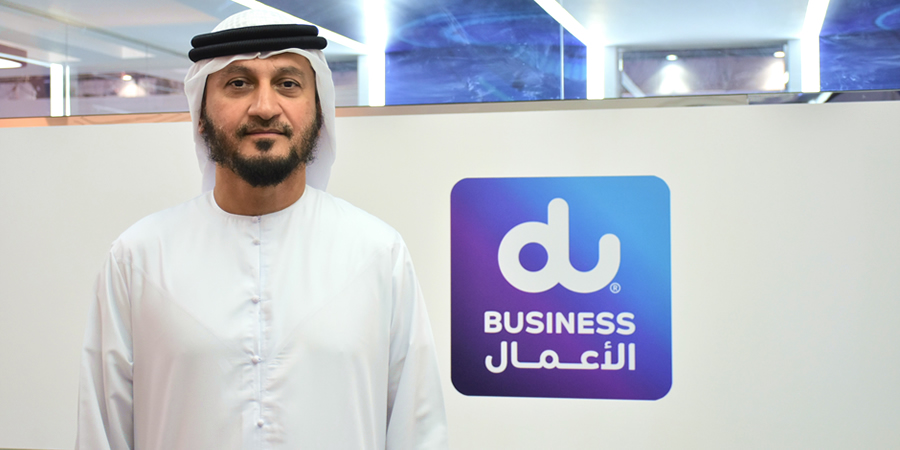Saleem AlBlooshi, CTO, du talks to Telecom Review about the opportunities and challenges of digital transformation in the UAE and especially what it means to create value in the ever-expanding ecosystem as a network service provider.
What do you hope to accomplish from this year’s GITEX to complement du’s exploration of advanced technologies and innovation in 5G use cases?
GITEX is the largest technology event in the region where customers, service providers and technology providers gather together under one roof and discuss the challenges and share innovation capabilities and ideas to create value. We are excited to be part of this event. This year, we are seeing big momentum from every aspect. Organizations are hungry to evolve and transform their business digitally. Being at the core of any digital transformation in the United Arab Emirates, we are excited to demonstrate the capabilities which will enable customers to create value in their business. The demonstrations on our stands are all realistic and are done in coordination with the customers and partners where value creation is quantified. Again, this is an exciting moment to be part of this ecosystem. In this event, we can see the value of the future and we have the capabilities to achieve that from an end-to-end perspective from our resources, technology and infrastructure that we significantly invested in over the past few years. Hence, today, we are in a position to be part of any digital transformation ecosystem in the UAE.
du has been successful in achieving a record 5G download speed of greater than 4.5Gbps as part of a project with its partners. What does this mean for the company’s 5G aspirations and which industry verticals are likely to benefit from this?
In our 5G journey, we opted to be in the leadership position at every evolution of the 5G technology. We were one of the first service providers to launch 5G internationally. The traffic is significantly increasing year on year. We have launched fixed wireless technology over our 5G infrastructure, where we see big momentum and adaptation of our 5G network. We are continuing our innovation in 5G, ensuring we are up-to-date with the technology. Our next big thing is the 5G standalone, which is expected to be launched by end of November with added carrier and resources to demonstrate to our customers that there are no bottlenecks from the capacity perspective. We are always innovating to meet our customer expectations and always ahead of the game to meet not only today’s but even future requirements. We have demonstrated the 4.5 Gbps in 5G, and this is not the end. We are working with our ecosystem partners to demonstrate 10-gigabit speed, and we are currently working on 5.5-gigabit speed to lead in our 5G journey.
Dubai is all set to become a global digital hub with the Dubai Metaverse Strategy aiming to add $4 billion to Dubai’s GDP, support 40,000 virtual jobs by 2030 and attract thousands of companies specializing in blockchain and metaverse technologies. Please give us an idea of the scope and prospects of such a mega project from a network service provider’s perspective.
The metaverse is creating new requirements from 5G network infrastructure, essentially in three aspects, which are higher bandwidth, lower latency and the number of connected devices. In our journey towards enabling 5G network capabilities, we see various ecosystems emerging around it. And metaverse is one of those ecosystems that UAE is in a position to offer, regulate and create value from thanks to the leading infrastructure that EITC has invested in to be able to maximize the value of metaverse and many other use cases. One of the enablers of metaverse's success is the infrastructure and our commitment to staying ahead of the game.
From your perspective, what are the challenges for digital transformation in the Middle East and how can this be addressed efficiently?
Digital transformation is about creating a competitive advantage for all organizations in the Middle East as well as internationally. To create value from an end-to-end perspective, we need to ensure that the tools and the capabilities and outcomes from a digital transformation architecture perspective are very clearly identified. Again, it is not only about tools; the people's talent is equally important. A well-rounded talent acquisition system is key to enabling digital transformation. It also has to be a business-driven transformation and not just a mandate, which will ultimately lead to failure. Any digital transformation strategy to be successful should incorporate the pillars of value creation, competitive advantage, tools and technology, people and business-driven transformation.










